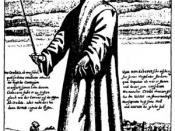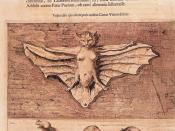The Black Plague spread from Asia into Europe in the mid fourteenth century and killed millions along its path of destruction. Europe suffered greatly from the Black Plague. However, economically Europe would change forever, and bring about a new age for the peasants. Trade, war, and other contacts between Europe and Asia caused the plague to spread and in 1347 the plague hit Sicily, Italy
The Black Plague is commonly mistaken for being one pandemic. When in actuality the Black Plague was different diseases. The pneumonic plague was spread by fleas on rodents. (Xenopsylla cheopis) A flea would feed on an infected rodent and then jump to another host, thus spreading the infection. With in a week the body's temperature rises to 104 degrees. Soon after, a victim of the pneumonic plague might experience additional symptoms such as chills, a sore throat, headache, weakness, and large painful lymph nodes.
The second pandemic to strike Europe was the bubonic plague. The bubonic plague is an air born disease that is easily spread. Those infected suffer from shortness of breath, bloody coughing, nausea, constipation, diarrhea, and black stools. The third most common plague is the septicemic plague occurs from contact with animals carrying the virus. The septicemic plague is often depicted in literature with victims carrying large black patches on their skin. Fever, swelling of glands and black patches on the skin are all common symptoms of the septicemic plague.
The Black Plague has largely been used in literature throughout the ages. References to it can be found in such works as "The Masque of the Red Death" written by Edgar Allen Poe, which has been speculated to be related to the septicemic plague and Doomsday Book by Connie Willis, in which a person travels back in time and ends up...


